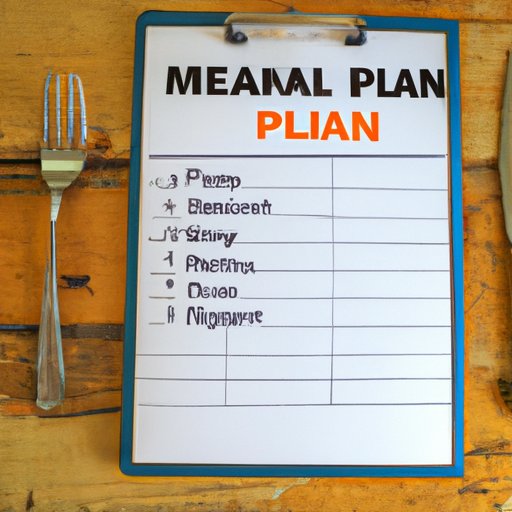Introduction
A healthy diet is one that helps to maintain or improve overall health. A healthy diet provides the body with essential nutrition: fluid, macronutrients, micronutrients, and adequate calories. It is important to start a healthy diet in order to reduce the risk of developing chronic diseases such as obesity, diabetes, and heart disease. Eating healthy can also help to improve mental health and emotional wellbeing.

Create a Meal Plan Based on Your Dietary Needs
When starting a healthy diet, it is important to consider your lifestyle and dietary needs. For example, if you are vegan, you will need to create a meal plan that avoids animal products. It is also important to think about any food allergies or intolerances you may have. Once you have identified your dietary requirements, you can use online resources such as nutrition calculators and food databases to create a meal plan tailored to your needs.

Stock Your Kitchen with Healthy Foods
Once you have created a meal plan, it is time to stock your kitchen with the right ingredients. Identify what types of food you need to purchase such as fresh produce, whole grains, lean proteins, nuts, and seeds. When shopping for groceries, choose fresh, unprocessed foods whenever possible. Additionally, store your food properly using airtight containers or resealable bags to prevent spoilage.

Incorporate More Fruits and Vegetables into Your Diet
Fruits and vegetables are an important part of a healthy diet as they provide essential vitamins, minerals, and fiber. According to a study published in the American Journal of Clinical Nutrition, “Increasing daily intake of fruit and vegetables is associated with lower risks of coronary heart disease, stroke, and total cancer.” To incorporate more fruits and vegetables into your diet, try adding them to salads, smoothies, soups, stir-fries, and other dishes.
Find Healthy Alternatives to Processed Foods
Processed foods such as chips, candy, frozen dinners, and canned goods often contain added sugars, unhealthy fats, and sodium. These ingredients can increase the risk of developing chronic diseases. Fortunately, there are healthier alternatives available such as fresh fruits, vegetables, whole grains, legumes, nuts, and seeds. Look for these options at your local grocery store or farmer’s market.
Track Your Progress and Adjust Your Diet as Needed
Once you have established a healthy diet, it is important to monitor your progress. Track your weight, energy levels, and other indicators of health. If you find that your diet is not working for you, make adjustments as needed. Talk to a registered dietitian if you need help making changes to your diet.
Conclusion
Starting a healthy diet can be intimidating, but it is possible with the right mindset and resources. To get started, create a meal plan based on your dietary needs, stock your kitchen with healthy foods, incorporate more fruits and vegetables into your diet, find healthy alternatives to processed foods, and track your progress. With dedication and consistency, you can enjoy the benefits of a healthy diet.
(Note: Is this article not meeting your expectations? Do you have knowledge or insights to share? Unlock new opportunities and expand your reach by joining our authors team. Click Registration to join us and share your expertise with our readers.)
